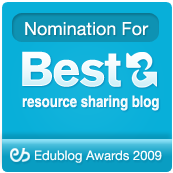How Twitter can be used for informal personal learning?
I joined Twitter in January 2008 and in the last 6 years, 4 months, and 7 days since my first tweet I have made or posted nearly 33,000 tweets! As I highlighted in my post from last year I have found Twitter the single most important source of information, events, research, back-channel, inspiration, and motivation I have ever come across.
Of course it’s not actually Twitter that does this; it’s the individuals I have connected with in those 6 year, from all corners of this wonderful world and from all walks of life and cultures. These people, who I’ve built my Personal Learning Network (PLN) around, have made me laugh, cry, think, reflect, criticise, critique, avoid, seek out, and generally strive to know more about myself.
The great thing is that you/they had no idea they were doing it, or even part of it. That’s because that’s what I use Twitter for. You might use Twitter for something else; running buddies, charity auctions, account complaints, celebrity stalking, coffee-shop cake comparisons. We each have our own version of the same system that offers our own unique answers or destinations.
Perhaps this is why Sue Beckingham asked me to help her out with her MSc dissertation because of both my approach, and use, of Twitter.
Using Google docs (something I first used for interviews and to collaborate on writing The Really Useful #EdTechBook), each question was semi-structured, giving the opportunity for follow on questions based on the interviewees answers. Sue certainly got me thinking about my own use, past and present, of how I use(d) Twitter.
With Sue’s permission, here is our exchange. I wish Sue the very best with her MSc dissertation, I only hope my small contribution was of use?!

Sue Beckingham: The purpose of my research is to gain an understanding of how Twitter can be used for informal personal learning, the context in which it is used, and the perceived personal value of this space as a learning environment. I am interested to find out how you as an Educator in Higher Education might use Twitter as an informal personal learning space and what this space affords.
Thinking about the people and organisations you follow on Twitter, how did you identify them as useful to follow for your personal informal learning?
David Hopkins: It’s difficult to remember back to when I started using Twitter but I remember being a little confused about it, and didn’t fully understand what is was and what is could be used for. After a while I focussed my tweeting and searches on my work as a Learning Technologist and then started to follow and converse with some sector leaders (Steve Wheeler, Grainne Concole, James Clay, etc.). From there I kind of followed their lead: I watched and learned, I started to blog my ideas and thoughts, I started to have people follow me and, using their Twitter bio, decided if I wanted to follow them back. At the start the number of people I followed far out weighed those who were following me, but it soon balanced out (which is key if you’re to be seen as a ‘thought leader’ and not just someone who follows everyone and anyone).
SB: Thank you. What would you say makes for a good bio? What should you include?
DH: A good bio ‘should’ include a real photo of you (although I hold my hand up and admit that I had an illustration, which looked nothing like me, for 5 years on many social media sites), link to your online ‘home’ (somewhere you are managing and collating all your network activity; blog, LinkedIn, About.Me, etc.), and a brief description of who you are or what you tweet about. I tend to ignore people who have things like ‘… father, lover, footy-mad, beer-drinking, etc.’ even if they start with a professional sounding job or bio description. Perhaps this is a true reflection of their use of Twitter, which is fine, but I’m not interested in the ‘lover’ or ‘footy-mad’ part of their activity, so that will put me off. I’ll find my information elsewhere.
SB: When you visit Twitter do you have a particular approach to finding new information?
DH: It depends where I am: at work I have Twitter open in a browser tab and flick between that and work tabs. At home I’ll be on my tablet or smartphone. Each platform means I use it differently: the browser version is easier to search, skim-read, click links, etc. The mobile versions need more attention and a clearer approach to finding information as the screen real-estate is more precious and easier to get lost in.
I use Twitter lists and saved searches a lot, but also like to just skim & scroll through my Twitter stream. I find it difficult to avoid the FOMO (Fear Of Missing Out) but have learned over the years to just accept I will miss somethings. Then again, I’ve also learned to trust my PLN that, if it’s important or relevant or interesting, it’ll be retweeted at some point and I’ll catch it another time!
FOMO is hard to get over but as you point out the development of a PLN can alleviate this.
SB: Which of the following do you like to engage in when using Twitter and why?
- conversations, discussions, debates
- answer others’ questions
- organised tweetchats
- prefer to just ‘listen in’
DH: All of the above, and for different reasons. I won’t deny thinking about each each tweet and how will this benefit my ‘brand’. By this I’m thinking about my reputation and my followers, will ‘this’ or ‘that’ appeal to them as they’ve voluntarily clicked my ‘follow’ button, so will this link, photo, article, discussion, joke, etc. mean anything, or am I going to annoy them with it.
Twitter has always been about the connections and contact I make with my PLN, those I follow and those who follow me, to the extreme that I feel responsible for the quality and quantity of posts, links, etc. If I could I’d reply to each and every tweet or mention I would, but again I have to ration myself to doing what I can. Conversations and debates are what is taking Twitter away from the superficial “here’s my morning coffee” tweets into a meaningful channel to work.
Sharing and ‘broadcasting’ is synonymous with Web 1.0, historically the realm of big business who could afford the high prices of .COM domain names. The rise of the writable-web as Web 2.0 gave everyone who wants it their own voice. The rise of social networks online crosses both of these realms, for me, with the added benefit (or complication) of the mobility and fluidity of Web 3.0 (the ‘executable’ web; Apps and the like).
There are times to listen and watch my Twitter stream, but I don’t like to take from a community without offering something back through either a tweet or some form of recognition.
SB: You mention that you have to ‘ration yourself’ – how do you do this?
DH: More often enough it’s leaving my smartphone or tablet on the side or in my bag so I’m not tempted to check it. Some days it’s easier, especially if I’m busy or engrossed in work or family and friends, other times it’s more difficult especially if I’m at a loss or in need of something more ‘interesting’ to keep my attention. There is no hard and fast rule, or even one that works, but different tactics on different days, for different reasons.
SB: Thinking about information that is shared that you engage with do you find added value where a tweet is extended by adding a link to more information? Which of the following is useful to you as a learner and why?
- view photos, images, infographics
- links to videos
- links to articles, papers, books
- anything else?
DH: Tweets that have a photo or some form of rich media are definitely more visible and engaging in a busy and sometimes frantic stream of updates, but it’s often not enough. I will usually browse the stream of tweets looking at a mixture of tweet lengths, number of hashtags used, if there are links, etc. but mostly I scroll and browse the avatars of who posted it. Some avatars are easier to spot than others, some I actively look for as I know they tweets about things that, more often than not, interest me. I’m sure I miss lots (FOMO?) but, as I said earlier, I have to accept I will miss some things.
SB: Do you think the number of people you follow contributes to this, ‘actively looking for avatars’, as opposed to reading in tweets in turn?
DH: Definately – the more you follow the larger the stream of tweets will be, and the speed in which they come. I know there are tools like HootSuite and the like to help manage these, as well as utilising Twitter’s own lists and saved searches, but these are not always easy to use, so I resort to just looking at the stream.
SB: What learning experiences using Twitter have been most beneficial to you? (i.e.. when was learning valuable, enjoyable, interesting to you?)
DH: Pretty much every time I tune into Twitter! There is always something being shared or discussed or criticised; from blog posts to news to research to opinions to jokes and personal chat. I have found the back-channel at conferences invaluable to learning and understanding so much of both the presentation, the background to it, as well as understanding the value (or lack of value) to ‘my’ community and my PLN!
Twitter has enabled me to leave my institutional network and reach further afield: nationally and internationally. This has been the single greatest achievement in my career to date, there is no way I could have become the professional I am today if I relied on my internal institutional network (I don’t know anyone who is satisfied with the career/professional development opportunities provided by their employer).
SB: How can others best be of help to you in enabling you to enhance your learning and self-development within Twitter as an informal learning space?
DH: If you take from the network, you should be prepared to give something back. I don’t like the term ‘lurking’, but it is sometimes a good title for those who take but don’t give something back. I know some who ‘listen’, but these people do sometimes give something back, even if it’s only a comment or share. If they power is in the network, any node of the network that takes and uses for its own glory, but doesn’t enhance or give back weakens the network.
Image source: Duncan Hill (CC BY 2.0)



















4 thoughts on “How Twitter can be used for informal personal learning?”
Comments are closed.